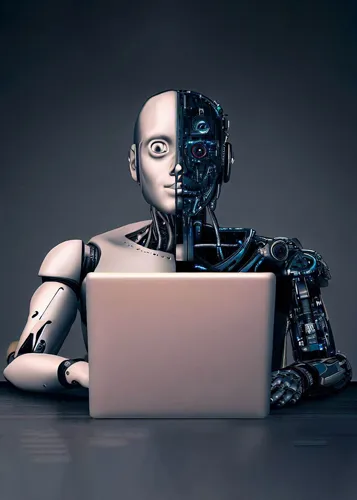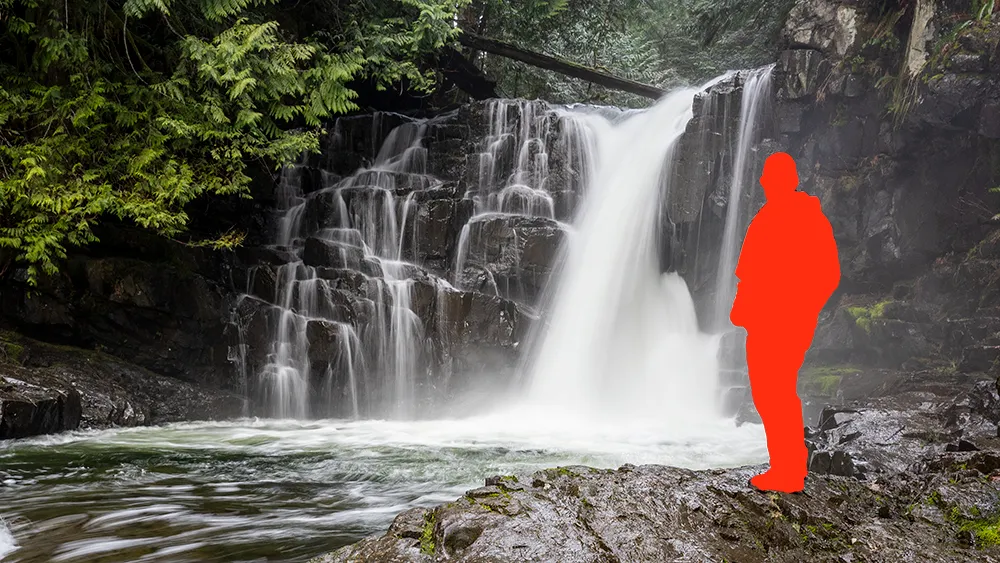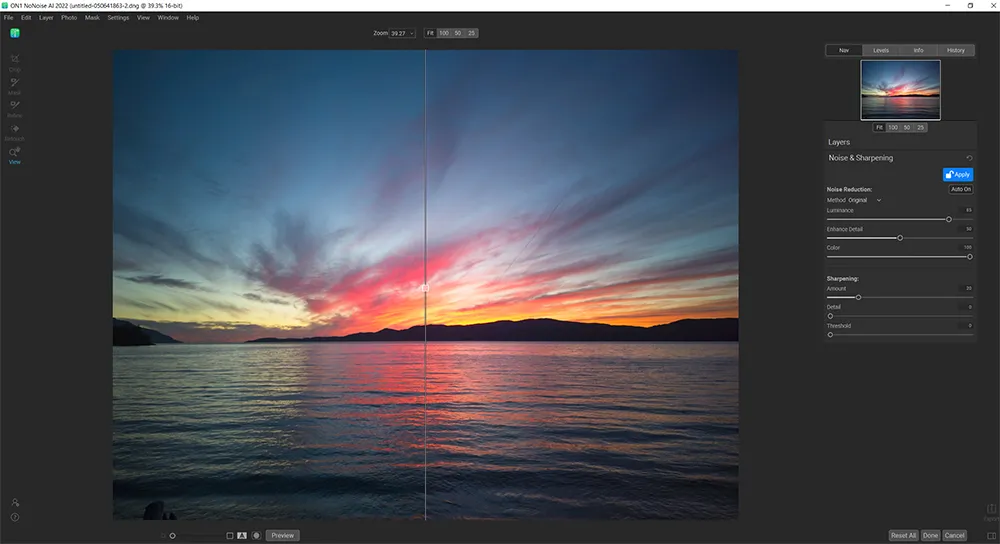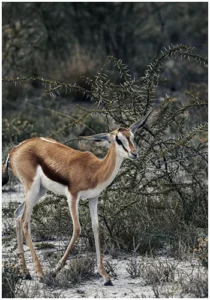
Photography as a Hobby for Beginners: Unlock Your Artistic Vision
Photography can be a fulfilling and enjoyable hobby that brings a creative outlet to your


How AI can help photographers? Did you know when ChatGPT was first launched it had 1 million users in its first month and has been growing ever since? AI is transforming the way we live and work. It’s already impacting the photography industry, and the possibilities are endless. Before you jump ship, I’m not talking about programs like MidJourney or DALL-E where they create the photo for you.
In this blog post, we’ll explore the exciting ways that AI is helping photographers capture stunning photos and take their skills to the next level. So, let’s dive into this fast-paced world of AI and discover what it has in store for the future of photography!
The benefits of AI for photography are numerous and impressive. The most notable include:
AUTOMATED PHOTOGRAPHY: Firstly, with AI-powered cameras, photographers can capture high-quality images with little or no manual intervention. AI automatically adjusts camera settings such as aperture, shutter speed, and ISO based on lighting conditions for perfect exposure in every shot.
FASTER AND EASIER PHOTOGRAPHY EDITING/PROCESSING: Secondly, AI-enabled editing tools make post-processing easier by automating tasks like cropping and straightening photos. Object removal is also possible with these tools without affecting the overall image quality. Thus saving time while increasing efficiency.
PHOTO COLOURIZATION BENEFITS: Thirdly, photo colourization can be done through machine learning algorithms. It is learning from data sets to produce realistic colours in older black-and-white photographs.
OBJECT RECOGNITION: AI capabilities today help photographers tag and sort their photos efficiently. Enabling them to find specific pictures quickly whenever they need them.
While exploring how AI can help photographers, it’s important to understand how AI works in-depth in photography applications. Essentially, AI algorithms are trained on vast amounts of image data. They use this information to make intelligent decisions about how to process images.
One key way that AI is used in photography is through object recognition. By analyzing an image and identifying objects within it, AI can help photographers with tasks such as tagging and sorting photos.
Another area where AI shines in photography is editing tools. With advanced algorithms for things like cropping and composition, AI-powered software can help photographers enhance their images quickly and efficiently.
AI also offers powerful capabilities for restoring old or damaged photos. By analyzing patterns in the image data, these systems can reconstruct missing areas or remove scratches and other imperfections.
Artificial intelligence (AI) has become increasingly prevalent in photography and is revolutionizing the way we approach post-processing. Skylum Luminar was one of the first to embrace AI. However, the rest of the software companies, like Adobe and On1 etc. are catching up.
With powerful AI-driven features, we, as photographers, can now approach photo editing differently. From automatic image enhancement and object recognition to facial recognition and intelligent noise reduction. AI-powered tools have made photo editing accessible to all skill levels. As AI technology continues to evolve, we can expect even more exciting advancements in photography. Thus, making it an exciting time to be a photographer.
AI-powered editing tools use AI algorithms to analyze and enhance images, making it easier for photographers to achieve stunning results in less time. One of the most impressive features of AI-powered editing tools is their ability to automatically adjust exposure, contrast, and colour balance. With just a few clicks, photographers can apply these adjustments to an entire set of images.
Another key benefit of using AI-powered editing tools is their ability to improve image sharpness and detail. By analyzing each pixel in an image and comparing it with surrounding pixels, these tools can intelligently sharpen edges and remove noise without sacrificing details.
AI-powered editors also offer advanced retouching capabilities that enable photographers to remove unwanted objects or blemishes from photos seamlessly. The software uses machine learning algorithms that learn from millions of examples. Enabling them to fill in gaps left by removed objects without any visible signs.
Image restoration is one of the most exciting applications of AI in photography. With this technology, photographers can restore old and damaged photos to their former glory.
AI works by analyzing images and identifying areas that need to be restored or enhanced. It then applies algorithms to fill in missing details, remove scratches and blemishes, and improve overall clarity.
One of the benefits of AI-powered image restoration is that it saves time compared to manual photo restoration techniques. Traditional methods require a lot of time-consuming work like scanning photos, fixing individual pixels, and colour correction.
With AI, it’s possible for photographers to restore large numbers of images quickly without sacrificing quality. This means they can provide their clients with high-quality results faster than ever before.
Moreover, image restoration has enabled us to preserve historical photographs with greater accuracy than ever before. Using AI technology to restore old photos allows us to witness both the people’s lifestyle and the surroundings of the past.

Object removal is another example of artificial intelligence in photography. With AI-powered editing tools, it’s possible to remove unwanted objects from photographs quick and easy.
The process involves selecting the object or area you want to remove from your photo and letting the software do its job. The algorithm then analyzes other parts of the image. Filling
in gaps where necessary to create a seamless final result.
Artificial Intelegence is helpful in landscape or architectural photography, for the removal of distracting elements like power lines, signs or people moving through a shot.
With AI Object Removal tools, photographers can save time by not having to manually edit their images pixel-by-pixel. Moreover, this method ensures that there will be no visible evidence of an edited element after processing.
Cropping and composition are two essential elements of photography that can make or break an image. With the help of AI, photographers can now take their cropping and composition skills to new levels. This is an option in Luminar Sklum
When it comes to cropping, AI-powered tools analyze images and suggest the best crop for maximum impact. This feature is particularly useful when a photographer wants to highlight a specific subject in their photo. The tool will automatically remove any unnecessary or distracting elements from the image while preserving its overall quality.
AI also helps with composition by analyzing the various elements within an image. It then suggests changes that would improve its balance, symmetry, and overall visual appeal. This means that even novice photographers can create stunning compositions without having to learn complex rules about placement and framing.
Photo colourization is one of the most exciting applications of AI in photography. With the help of deep learning algorithms, AI can now add accurate and realistic colours to black and white images.
AI-powered photo colourization tools use machine learning models that are trained with millions of colour images to accurately predict which colours should be applied. The process is quick and efficient, saving photographers a lot of time compared to manual colourizing techniques.
This technology is impressive for revitalizing old photos with vibrant colours that were absent in the original image. Through this technique, photographers can create a new level of engagement with their audience by presenting vintage photographs in an entirely new light.
AI-assisted image noise reduction is another area where AI can help photographers. Noise, also known as grain, is the visual distortion that occurs in photos when shooting with high ISO settings or in low light conditions.
AI algorithms analyze and learn from large datasets of images to identify patterns of image noise and then remove it automatically. This results in cleaner and sharper images without sacrificing any details.
There are various AI-powered tools available for photographers that use this technology to reduce image noise effectively. These tools use complex algorithms to differentiate between the signal (the actual detail within an image) and the noise (unwanted artIfacts). They then apply selective blurring only to the areas containing unwanted artifacts while retaining sharpness in other parts of the photo.
One significant benefit of using AI is noise reduction. It can significantly reduce post-processing time compared to traditional methods like manual brushing or blur filters. It allows photographers more time to focus on other aspects of their work, such as composition or creative editing.

AI is also revolutionizing the photography industry by providing photographers with automatic object recognition for photo tagging and sorting. By using machine learning algorithms, object recognition enables photographers to tag and sort photos based on specific objects within them. This not only saves immense amounts of time but also makes it easier for photographs to find the exact image they need in seconds.
There’s no denying that AI technology holds tremendous potential in transforming the way we capture and edit our photos. It will be exciting to see how these technologies change the world of photography as they develop rapidly.
AI is changing the world of photography. We now have new ways to speed up our post-processing. Artificial intelligence can provide us with more creative options and time saving solutions. As AI continues to advance, the possibilities will continue to grow.
But, as we embrace these new technologies, it’s important to remember that AI is not a replacement for creativity and skill. It’s a tool that can enhance our abilities and help us achieve our artistic visions.
I’ll leave you with this thought. Haven’t we been using AI in our post-processing for years? What is autocorrect or auto-suggest? Now is the time to embrace this new technology. Let’s speed up our photography workflow. Don’t be afraid of AI. Give it a chance and see how it helps your photography.
AI is a fast-moving technology that has the potential to revolutionize photography. It’s exciting to think about what the future holds and how AI will continue to help us capture and create stunning photos.
AI-powered photography technology enhances photo editing by automatically adjusting image settings such as brightness, contrast, and colour balance. It can remove unwanted objects or people from photos, fix image problems, and help create panoramas or composites. With AI technology, photographers can speed up their workflow and achieve high-quality results.
AI-enabled photography tools pose potential risks, such as loss of control over image manipulation, bias in automated decisions, and infringement of privacy rights. Reliance on AI can hinder creativity and skill development, leading to a loss of authenticity in the art of photography. It’s important to weigh these risks and benefits when using AI tools in photography.
AI-enabled photography tools for mobile devices, including Adobe Photoshop Camera, Google Lens, VSCO, and Prisma. These tools automatically adjust image settings, remove unwanted objects, and can apply artistic filters.
AI can help amateur photographers by offering automatic settings, object recognition, and real-time feedback on composition and framing. AI can also assist with editing tasks like noise reduction and color correction, making it easier for beginners to achieve professional-looking results. By using AI, anyone can improve their skills and gain confidence.t

Photography can be a fulfilling and enjoyable hobby that brings a creative outlet to your

Welcome to our guide to Photoshop tutorials for beginners: A Complete Beginner’s Tutorial for Learning

Creating stunning images is all about nailing the perfect colour grade. It’s what makes your